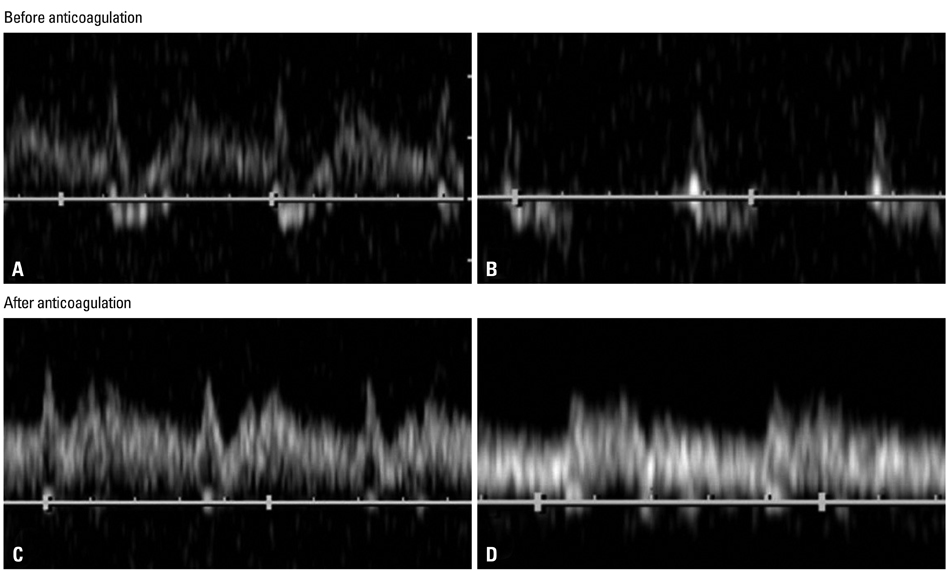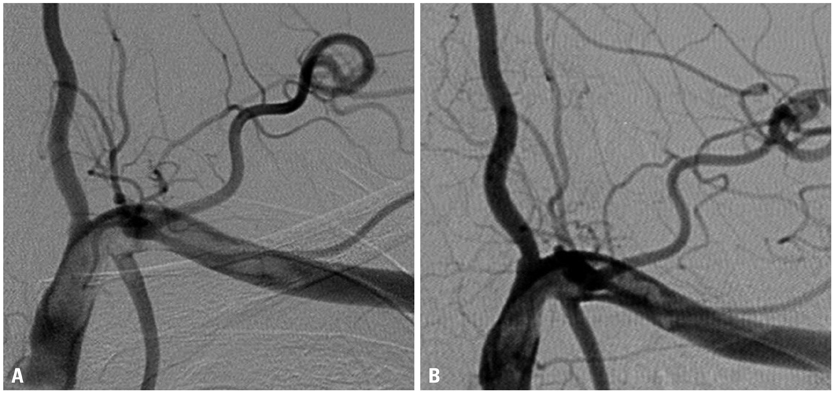Yonsei Med J.
2013 Nov;54(6):1538-1541. 10.3349/ymj.2013.54.6.1538.
A Case of Cerebellar Infarction Caused by Acute Subclavian Thrombus Following Minor Trauma
- Affiliations
-
- 1Department of Neurology, National Medical Center, Seoul, Korea.
- 2Department of Medicine, The Graduate School, Yonsei University, Seoul, Korea.
- 3Department of Neurology, Samsung Medical Center, Sungkyunkwan University, Seoul, Korea.
- 4Department of Neurology, Samsung Changwon Hospital, Sungkyunkwan University School of Medicine, Changwon, Korea.
- 5Department of Neurology, Yonsei University College of Medicine, Seoul, Korea. hsnam@yuhs.ac
- KMID: 1798155
- DOI: http://doi.org/10.3349/ymj.2013.54.6.1538
Abstract
- Subclavian steal syndrome caused by an acute thrombus is very rare. We present a case of cerebellar infarction with proximal subclavian artery thrombosis. A 56-year-old woman was admitted for sudden vertigo. One day prior to admission, she received a shoulder massage comprised of chiropractic manipulation. On examination, her left hand was pale and radial pulses were absent. Blood pressure was weak in the left arm. Downbeat nystagmus and a right falling tendency were observed. Brain MRI showed multiple acute infarctions in the left cerebellum. The findings of Doppler ultrasonography in the left vertebral artery were compatible with a partial subclavian artery steal phenomenon. Digital subtraction angiography demonstrated a large thrombus in the left subclavian artery. After heparin infusion, thrombus size markedly decreased. Cerebellar infarction caused by acute subclavian thrombosis following minor trauma is rare, but the thrombus can be successfully resolved with anticoagulation.
MeSH Terms
Figure
Reference
-
1. Bornstein NM, Norris JW. Subclavian steal: a harmless haemodynamic phenomenon? Lancet. 1986; 2:303–305.
Article2. Ochoa VM, Yeghiazarians Y. Subclavian artery stenosis: a review for the vascular medicine practitioner. Vasc Med. 2011; 16:29–34.
Article3. Cho HJ, Song SK, Lee DW, Choi HY, Heo JH. Carotid-subclavian steal phenomenon. Neurology. 2007; 68:702.
Article4. Hennerici M, Klemm C, Rautenberg W. The subclavian steal phenomenon: a common vascular disorder with rare neurologic deficits. Neurology. 1988; 38:669–673.
Article5. Osiro S, Zurada A, Gielecki J, Shoja MM, Tubbs RS, Loukas M. A review of subclavian steal syndrome with clinical correlation. Med Sci Monit. 2012; 18:RA57–RA63.
Article6. Fields WS, Lemak NA. Joint Study of extracranial arterial occlusion. VII. Subclavian steal--a review of 168 cases. JAMA. 1972; 222:1139–1143.
Article7. Kumral E, Kisabay A, Ataç C. Lesion patterns and etiology of ischemia in superior cerebellar artery territory infarcts. Cerebrovasc Dis. 2005; 19:283–290.
Article8. Chen WL, Chern CH, Wu YL, Lee CH. Vertebral artery dissection and cerebellar infarction following chiropractic manipulation. Emerg Med J. 2006; 23:e1.
Article9. Kliewer MA, Hertzberg BS, Kim DH, Bowie JD, Courneya DL, Carroll BA. Vertebral artery Doppler waveform changes indicating subclavian steal physiology. AJR Am J Roentgenol. 2000; 174:815–819.
Article10. Babic S, Sagic D, Radak D, Antonic Z, Otasevic P, Kovacevic V, et al. Initial and long-term results of endovascular therapy for chronic total occlusion of the subclavian artery. Cardiovasc Intervent Radiol. 2012; 35:255–262.
Article
- Full Text Links
- Actions
-
Cited
- CITED
-
- Close
- Share
- Similar articles
-
- Major Trauma induced Left Ventricular Thrombus after Acute Myocardial Infarction
- A Case of Sudden Hearing Loss due to Posterior Inferior Cerebellar Artery Infarction
- A Cerebellar Infarction Presented with a Clinical Seizure
- Embolic Infarction with Hypercoagulability Caused by Subclavian Pseudoaneurysm
- Cerebello-brain stem Infarction following Tearing of Vertebral Artery combined with Cervical Spine Fracture




